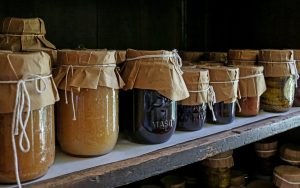The Importance of Sustainable Packaging in the Food Industry
Next Generation of Sustainable Food Packaging

Our environment is suffering greatly as a result of single-use food packaging. As landfills and waterways become choked with plastic bags, Styrofoam food containers, disposable coffee cups, and more. The convenience of food packaging is overshadowed by the trash and pollution that the packaging leaves behind. Despite the fact that it is difficult to imagine daily life without all of this convenient packing. Most of it did not exist until recently.
As our food system became less local but more capable of feeding more people over a larger geographic region. And as food became more processed, packaging technology evolved to keep up. Although packaging is necessary for some activities, the business has grown with little regard for the environment or health. The types of packaging we use, whether it be plastic, metal, paper, or glass, determine its environmental impact, as well as how it will or will not decompose in landfills or cause pollution or trash. Chemical additives and special coatings on or in various types of packaging are often where we come into contact with chemicals of concern, but coatings and additives may also have an impact on the ability to recycle a material in some cases.

Plastics: Environmental Impacts
In certain nations, the recycling rate is much lower. In the United States, for example, the overall plastic recycling rate was only 8.7% in 2018. Furthermore, the COVID-19 epidemic has resulted in an increase in plastic usage. The vast majority of plastics end up in landfills or contaminate the environment due to low recycling rates. Researchers estimate that between 4.8 and 12.7 million metric tones of plastic garbage reach the oceans each year. Dumping plastic into the water has serious ramifications. Plastic in the environment is harmful to wildlife and poses a health risk to humans.
In spite of the fact that Tetra packs are now used for packaging, they are laminated with a layer of waterproof plastic paper. They also contain aluminum and Nano preservatives. These cartons are made from paperboard made of wood in addition to thin layers of aluminum and polyethylene. As a result, tetra pack packaging cannot be fully recycled.
What Do You Need to Know About Sustainable Packaging in the Food Industry?
Packaging is critical when it comes to addressing the issue of sustainable food consumption, which is obviously about reducing the environmental footprints of packaged food. Food waste and loss are constantly reduced with environmentally friendly packaging, and food safety concerns are addressed by minimizing food-borne diseases and chemical contamination. But most crucially, it must address the long-term critical issue of persistent plastic trash accumulation in the environment, as well as the conservation of oil and food material resources.

The Growing Food Demand: A Shift in Perspective
The shift to sustainable packaging in the food industry isn’t limited to a few small businesses. It’s an industry-wide trend, and many, if not all, of the world’s leading packaging companies, are becoming more environmentally conscious. It looks like single-use plastic packaging will become obsolete in a few years. Food packaging firms have improved their efforts to be more eco-friendly as environmental laws become stricter and stricter. But this is nothing new. The trend has been occurring all over the world for some time now. Over 93 percent of packaged products companies already devote more time to environmental issues than in years past. If you visit the supermarket right now, you will see signs that this is happening.

However, while there will undoubtedly be a lot of plastic, there will also be more recycled or biodegradable packaging. There is a general shift toward sustainability in all sectors of the world. As consumers become more aware of environmental issues, more businesses are taking them seriously. The food packaging industry is evolving and changing for the better.
The Growing Food Demand: A Shift in Perspective
The primary goal is to preserve the world’s ecosystems, ensuring the long-term quality and viability of human existence. Packaging solutions that respect the environment are no longer completely optional. Many government public relations agencies are mandating businesses to adopt sustainable packaging techniques in order to lessen their environmental impact while also assisting business owners in making long-term profits.
As the global food trade’s demands changed, so did the packaging used to hold food products. The sector is currently facing yet another significant transition : Food packaging that is environmentally friendly. This shift has occurred after years of rising effects from a variety of sources. However, in order to fully know where the business is headed, it is vital to first understand how it got here. Food packaging developments are usually driven by changing consumer expectations. The concept of food packing evolved when people began to sell and keep products more frequently. The need for a longer shelf life led to the development of canning.

Even if the link between shelf-life and food waste isn’t clear, a substantial portion of food loss is due to the short shelf-life of many fresh fruits and vegetables due to their biological nature. But now food waste reduction is projected to be significant as a result of shelf life extensions, especially when utilizing a well-dimensioned eco-friendly packaging material that is tailored to food needs in terms of preservation.
Sustainable Business: Cost and Savings
Packaging, on the other hand, is frequently misunderstood as an extra economic and environmental burden rather than an added benefit for waste reduction. When a food product is wasted, the packaging is discarded as well, adding to the environmental burden. Packaging materials are primarily oil-based in our plastic-based economy. Globally, millions of tones of plastic packaging end up in landfills after being used as food packaging for just one, extremely brief period, resulting in millions of tones of plastic packaging waste that eventually accumulates in the soil.
A small percentage of the waste however gets collected and the rest ends up in the soil and ocean. Eventually, these marine and soil litter particles degrade into micro and Nano-sized particles, which can easily penetrate living things such as fish, and then be ingested by humans, causing serious long-term damage. If this continues, there may be more plastic in the ocean than fish in the coming years if nothing is done.
Consumer Needs: What Consumers Want?
Environmental challenges therefore become more pressing as the general public pushes for sustainability. People are becoming more ecologically concerned, which means they are purchasing items that are more sustainable. As a result, the food packaging business is witnessing a shift in consumer preferences. According to a survey, most consumers in the United States and the United Kingdom value recyclable packaging. Just over half of them mentioned reusable packaging, while the rest mentioned biodegradable packaging. There are two primary reasons for trying to become more environmentally friendly. Firstly, sustainable packaging will lower the negative environmental impacts of the industry. Secondly, more environmentally friendly packaging options will attract more buyers.
Plant-based eco products are also microwaveable, durable, and, most importantly, biodegradable. As a result, recycling plastics is a viable alternative to replacing them. Using recycled materials is advantageous not only because it is better for the environment, but also because it is less expensive. Manufacturers must only pay for the cost of recycling old materials rather than purchasing new ones.

Thus, using recycled materials is not the only way to be responsible for the environment. True sustainability emphasizes the use of life-cycle inventory and life-cycle assessment to reduce the environmental impact or ecological footprint of the packaging you choose. It also covers the entire life cycle of the materials, from production to recycling. Other crucial aspects of sustainable packaging are that the product is beneficial, healthy, and safe for both people and communities throughout its life cycle. Cost and performance standards should be met in the marketplace, and ecologically responsible procedures and technology should be employed to make the packaging. On a physical level, it should also engineer to maximize energy and material efficiency.
We’re in it for the long haul, and if we adapt to modern developments, we’ll be just fine.



